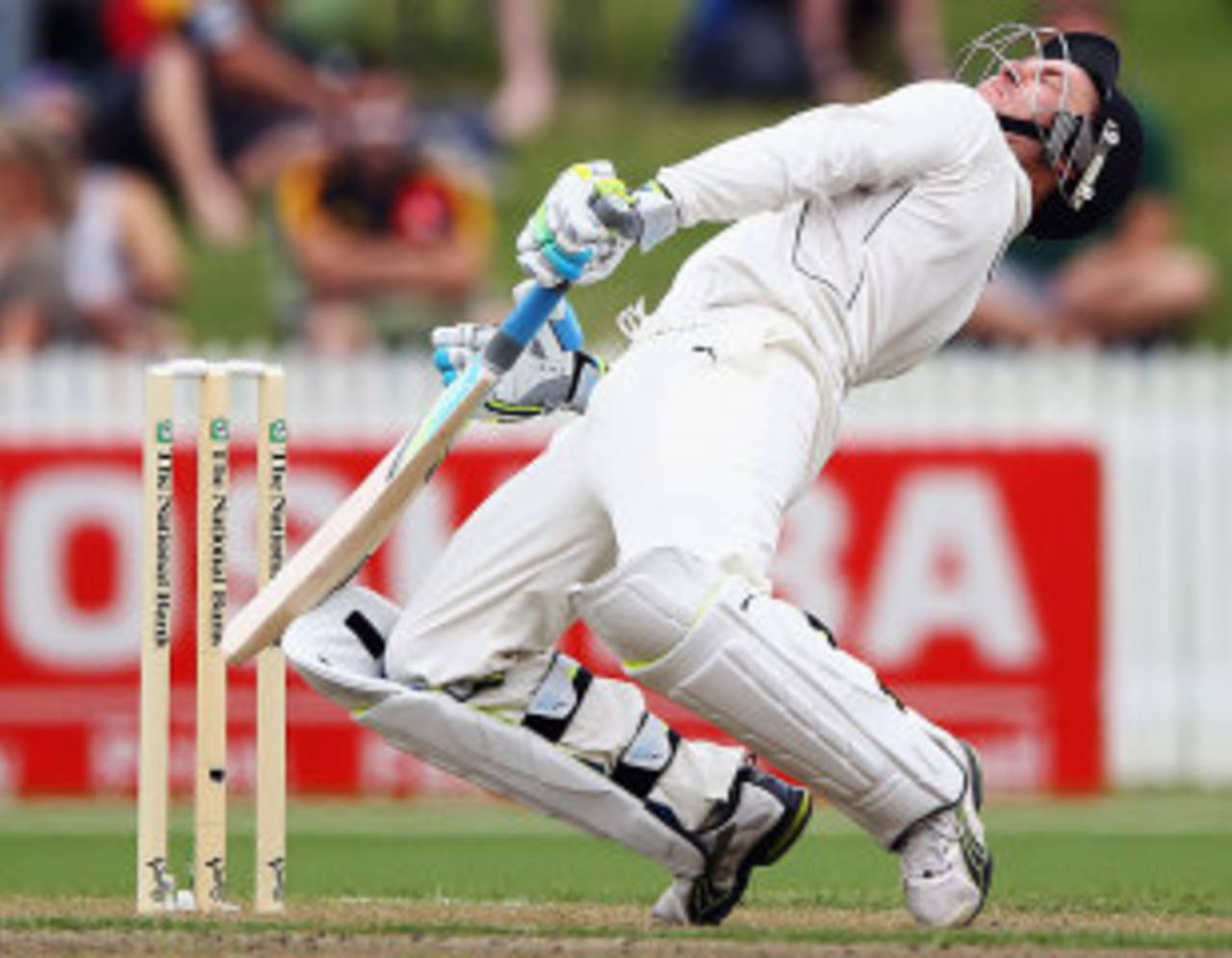More bouncers please
In the first of our new series on cricket rules and laws that could do with changing, we examine the case for unlimited short-pitched bowling in Tests
Sharda Ugra
09-Dec-2012

The batsman's skills at evading and playing bouncers must also be tested • Getty Images
It used to be called the bouncer rule and came about as late as 1991. And its job was to restrict the bowler to one bouncer per over per batsman. In the beginning it was an "experimental" rule, and in 1994 it was turned into what we see in the current law book.
a) a bowler shall be limited to two fast short-pitched deliveries per over; b) a fast short-pitched delivery is defined as a ball which passes or would have passed above the shoulder height of the striker standing upright at the popping crease; c) the umpire at the bowler's end shall advise the bowler and the batsman on strike when each fast short-pitched delivery has been bowled; d) …a ball that passes above head height of the batsman, that prevents him from being able to hit it with his bat by means of a normal cricket stroke shall be called a wide; e) For the avoidance of doubt any fast short-pitched delivery that is called a wide under this playing condition shall also count as one of the allowable short pitched deliveries in that over.
It is perhaps the last significant rule made by cricket's "old" empire, before the game's power base moved east.
In the decade before the 1990s, West Indies had reigned over the world chiefly by means of a pack of fast bowlers who were able to use speed and the well-directed bouncer to test and dismantle the mettle of batsmen. The bouncers were not merely sustained, they were, perhaps more importantly, effective. The strong pack of pace bowlers led West Indies' unchallenged run through the '80s and caused a surge of opposition in the old world, which tut-tutted about the effect of "intimidatory" bowling on batsmen and the game's spirit.
Another reason given for the birth of the bouncer rule is that along with hurting batsmen, intimidatory bowling, by virtue of necessarily being fast bowling, led in part to unhealthy over rates. A surfeit of quick bowlers, with their long run-ups and bouncer barrages gave some Test-match audiences only 70-over days. (More than two decades later, with teams featuring medium-pacers and spinners, match referees still struggle to keep over rates up to 90 a day).
When the rule was instituted, there were, not surprisingly, a few objections. In 1994, umpire Dickie Bird called the bouncer rule "farcical" because umpires themselves had the powers to put a stop to what they thought was intimidatory bowling.
In the decades that have followed, the game is increasingly favouring batsmen: smaller grounds, flatter wickets, heftier bats, better protective equipment.
If they get rid of the bouncer rule in Test matches, administrators will give bowlers some advantage and hand back the power of controlling intimidatory bowling to the umpires.
Using the bouncer as a negative tactic can be spotted as quickly as an outside-leg-stump line or a beamer can be. Having the licence to freely use the bouncer as an aggressive weapon will test both the stamina of the bowler and the skill of the batsman. Who knows, it may give coaches a chance to teach batsmen a wider range of skills beyond the hoick to cow corner or the upper cut to third man.
Sharda Ugra is senior editor at ESPNcricinfo